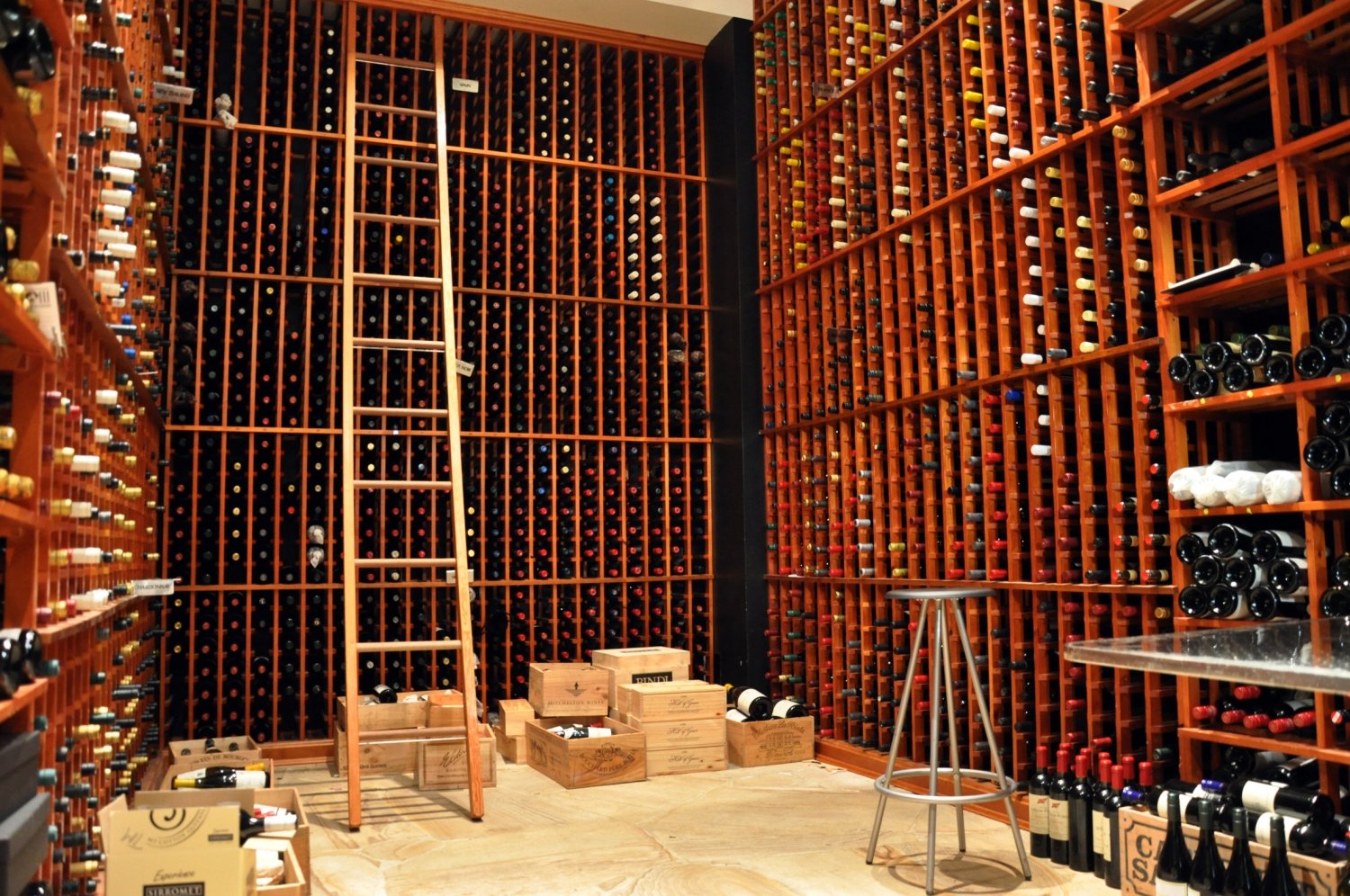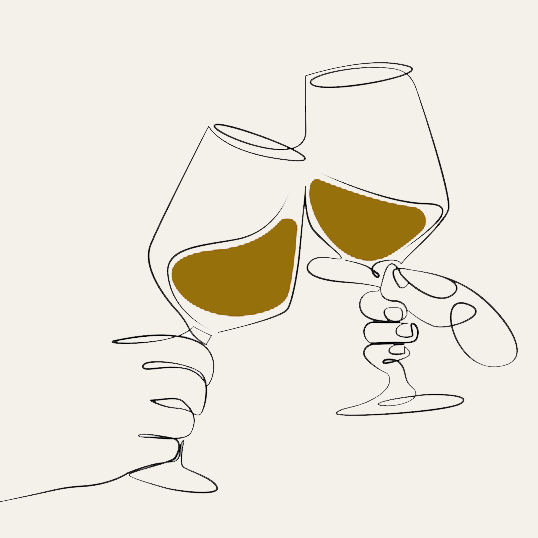Over the years, we’ve had many questions from our members about cellaring their wines. Should I be doing it? What’s the best way to cellar? Do I have to buy a wine fridge? Do all wines get better with ageing? There’s a lot of conflicting information out there and definitely some myths that need to be dispelled for good!

Look no further – we have put together the following guide to explain what cellaring is all about, what happens as wines age and some great tips to ensure your favourite wines reach their true potential.
WHAT IS THE BENEFIT OF CELLARING WINE?
Consider this statistic – it may surprise you.
OVER 90% OF WINE BOUGHT IN AUSTRALIAN BOTTLE SHOPS IS CONSUMED WITHIN TWO WEEKS OF THE PURCHASE DATE.

Yes, that’s correct. And winemakers know this, and that’s why winemaking practices have changed a bit over the last twenty years (the other reason is the rise of the screwcap, but more about that later). We know that sometimes it’s all about instant gratification, and these days most entry and mid-range red wines are made to be very approachable and will drink beautifully as soon as they are purchased. That’s not to say they’re not suitable for cellaring (many are, at least in the short term) but they don’t need to be, if patience is not your strong point. However, as the price point and quality level increases, so does the cellaring potential. Take our Signature Range, for example. We know that the wines in this range start to look outstanding once they are more than 5 years old.
OPTIMUM TEMPERATURE FOR CELLARING WINE
Ok – here is the main thing – the enemy of wine is heat, but just as damaging are constant fluctuations in temperature (such as day to night temperature changes) which may severely impact the condition of the wine.
The ideal temperature for long-term cellaring wine is around 10-14°C, this allows slow controlled ageing for best results. Even a higherthan-ideal, but constant storage temperature (i.e. 18°C) is actually kinder to the wine than a revolving night/day variation of 10-20 deg.
The best option in our sub-tropical climate is to invest in a wine storage cabinet that can maintain this ideal constant temperature. If you have a lot of wine, there are also commercial storage facilities that will cellar your wine for you. Otherwise, store your wine in the coolest and driest place in your home, that has minimal fluctuation in temperature and is away from vibrations and direct sunlight. And please – never store wine on top of a fridge, and never leave it in your car on a warm day.
THE IDEAL TEMPERATURE FOR LONG-TERM CELLARING WINE IS AROUND 10-14°C
DO I HAVE TO LAY THE BOTTLES DOWN?

With cork closures becoming less common, many wine drinkers are confused about this one. For wines under cork, it is definitely best to store bottles on their side, to prevent the cork from drying out, which can let air into the wine and age it prematurely, or cause faults to develop. Most sparkling wines still use corks, and these must always be stored lying down, as if the cork dries out, the bottle can slowly lose pressure – and no one likes sparkling wine that isn’t sparkling! Wines under screwcap can be stored anyway that you like. The important thing when deciding to age a screw-capped wine is to ensure that the cap is in perfect condition – if the cap is dented or damaged, it’s possible that the seal may not be perfect. A good reason to lay red wines down for long-term ageing, regardless of the closure, is sediment. As the tannins, colour pigments and acids go through complex ageing reactions, it is quite common for a small amount of sediment to fall out of red wine. Laying the bottle down for ageing means the sediment forms on the side of the bottle, and the shoulder of the bottle then helps you avoid pouring out the sediment as well as the wine. It is also a good idea to decant very old red wines into a decanter before serving, to avoid the sediment ending up in your glass. (The sediment is harmless, but it may taste slightly bitter and may have a gritty texture. No one likes a mouthful of grit!)
DOES THE WINE STILL AGE UNDER SCREWCAP?

Yes, it does. The same wine will age differently under a cork and a screw-cap, however. Cork is porous and allows a slow, tiny ingress of air which helps the ageing reactions. In general, screwcap wines will age more slowly as they are an airtight seal – which is the other reason winemakers tend to release wines that are ready to drink earlier, so you don’t have to cellar longer to compensate. Wines under screwcap do tend to be a little more forgiving of less than ideal storage temperatures as well, as there is no cork to expand and contract with changing temperatures. And the best thing – you don’t have to worry about cork taint, which can affect up to 10% of wines bottled under cork.
WILL I LIKE THE WINE BETTER ONCE IT’S AGED?
This is an interesting one. In Australia, many people don’t have much experience with wine more than a few years old. Some people actually may prefer the taste of young fruity reds and can mistakenly believe that cellared reds are past their best, because those aged flavours and colours can seem so different. Other people love the extra complexity that cellaring brings. We recommend that you explore the potential of cellaring for yourself.
Start with a case of a single good wine (we can strongly recommend one of our Signature Collection wines) and then be disciplined – store it and drink one bottle each year. Keep a tasting diary to compare each year of ageing, and we’re sure that you’ll come to appreciate the rewards that cellaring can bring.
AS WINE AGES, SLOW INTERACTIONS HAPPEN WITH SMALL MOLECULES JOINING UP TO MAKE BIGGER ONES, MAKING THE WINE SOFTER AND MORE VELVETY.
WHAT HAPPENS WHEN WINES AGE?
We like to think of wine as a living, changing thing. Ageing allows the flavours of the wine to develop and mature, as well as softening the tannins and acids. Tannins are a large group of naturally occurring chemicals in fruits, tea and coffee, nuts and wine. Tannins are astringent (mouth-drying) and in some cases, bitter. The smaller tannin molecules can be quite drying and “grippy”, but larger tannins can seem silky, soft or powdery. Red wine has a whole range of different tannin compounds, some small and some large. As wine ages, slow interactions happen with small molecules joining up to make bigger ones, making the wine softer and more velvety. For example Cabernet Sauvignon, which is a wine with naturally high tannin, for a few years can be quite hard and drying when young, but softer and smooth when cellared a few years. White wines are generally low in tannins, but they can also go through some change in mouthfeel – the acidity can become softer and less obvious, the body richer and fuller, and textures like chalkiness or waxiness start to emerge, particularly if oak has been used. Young red wines have intense, fresh red and black fruit flavours like raspberry, blackcurrant, plums and cherries. The most obvious flavour difference with ageing is the emergence of “secondary” flavours – think cooked and dried fruit, rather than fresh. Plum jam, blackberry pie, prune compote and rich fruitcake. Some reds develop savoury tones (think black olives and dried tomato) and oak-derived flavours (wood, spice, vanilla) integrate with the fruit. In white wines, the secondary flavours that may develop include toast, nuttiness, lemon curd, dried citrus rind and in oaked Chardonnays, cashew paste and crispy bacon. Fresh fruit flavours mellow and become rounder (roasted pears, nectarine pie).
COLOUR – NATURAL CHANGES OVER TIME
Young reds are deep ruby with purple undertones. As the colour compounds interact with tannins, the colour changes through ruby to garnet (brick red) and in very old reds, tawny edges will occur. There are varying colour hues and intensities between varietals, but these colour changes should happen slowly over a few years. Rapid colour developments or browning usually mean that cellar conditions are not ideal, a poor closure, or that the wine was not particularly suited to cellaring.
White wine colours slowly deepen with age – moving from pale yellow/green to straw to deeper golden tones, while very old chardonnays and botrytis-affected dessert wines move towards dark honey and toffee colours. The main thing here is not to be put-off by developed colour in an old wine – taste it first!
ARE THERE WINES THAT ARE NOT WORTH CELLARING?
Absolutely. Some wines that are best enjoyed in their youth and lose their appeal with age. Unoaked whites, such Sauvignon Blanc and unwooded Chardonnay, gradually lose their freshness and fruit intensity and may taste dull if aged too long.
There are exceptions – Riesling is a cellaring star, it can age for years, especially under a screwcap. Rosé, on the other hand, is made to be drunk young, while the berry flavours are fresh and the colour is pink (it will fade to orange in time).


